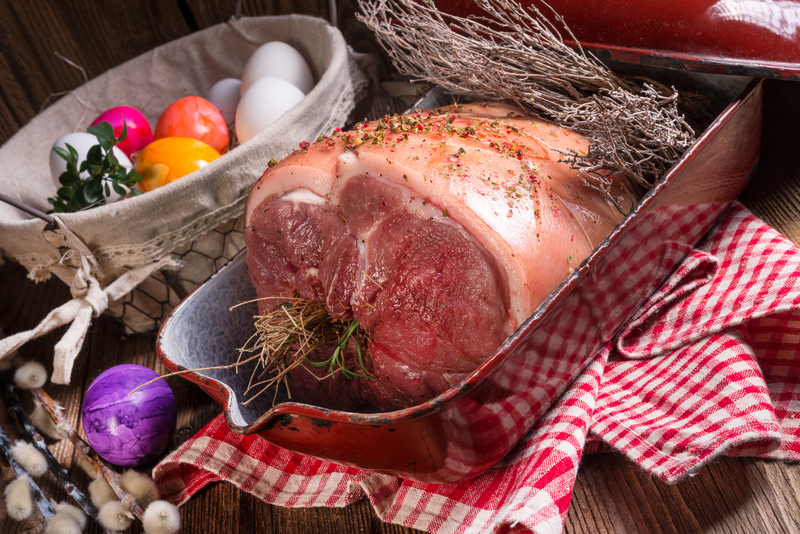Efficient Techniques for Quick Kitchen Tile Cleaning
Posted on 12/10/2024
The kitchen is often considered the heart of the home, a place where culinary magic happens and family memories are made. Because of its high-traffic nature, keeping the kitchen clean is paramount, particularly the tiles that are subjected to spills, splashes, and stains on a daily basis. This article will provide an in-depth look at efficient techniques for quick kitchen tile cleaning, with a special focus on practicality and ease.
Understanding the Types of Kitchen Tiles
Before delving into cleaning techniques, it's essential to understand the different types of kitchen tiles. The cleaning method you choose will often depend on the material of the tile.
Ceramic Tiles
Ceramic tiles are popular for their durability and ease of maintenance. They are resistant to moisture and stains, making them a practical choice for kitchens.
Porcelain Tiles
Similar to ceramic tiles but denser and less porous, porcelain tiles are highly durable. However, cleaning can sometimes be a bit more challenging due to their density.
Glass Tiles
Glass tiles offer a sleek, modern look and are resistant to water and stains. However, they can be prone to smudges and fingerprints.
Stone Tiles
Natural stone tiles like marble, granite, or slate require special care because they can be porous and prone to staining.

Routine Cleaning Techniques
Regular maintenance is the key to keeping your kitchen tiles in top condition. Incorporate these routine cleaning techniques into your daily or weekly cleaning regimen.
Sweeping and Vacuuming
Begin by sweeping or vacuuming the kitchen floor tiles to remove dirt, dust, and food particles. A handheld vacuum can be particularly effective for getting into corners and along baseboards.
Damp Mopping
Use a damp mop with a mild detergent or a mixture of water and vinegar to clean the tiles. Make sure the mop is just damp, not soaked, to avoid excess water seeping into grout lines.
Spot Cleaning
For daily spills and stains, use a sponge or cloth dampened with a mild cleaner to wipe up messes immediately. This prevents stains from setting in and becoming more challenging to remove.
Deep Cleaning Techniques
While routine cleaning is essential, deep cleaning is crucial to tackle stubborn stains and grime that accumulate over time. Here are some efficient deep cleaning techniques:
Baking Soda and Vinegar
Create a paste using baking soda and water. Apply this mixture to stained areas and let it sit for about 10-15 minutes. Follow this by spraying vinegar over the paste. The chemical reaction will help lift stains and grime. Scrub with a brush and then rinse thoroughly with water.
Steam Cleaning
For a chemical-free deep clean, consider using a steam cleaner. The high-temperature steam effectively loosens dirt and grime from tiles and grout lines. Follow the manufacturer's instructions and make sure the tiles are sealed properly to avoid damage.
Commercial Tile Cleaners
There are many commercial tile cleaners available that are designed to tackle tough stains and deep clean tiles. Choose a cleaner that is safe for your tile material and follow the instructions on the label.
Grout Cleaning Techniques
Grout lines between tiles can easily accumulate dirt and become discolored. Cleaning grout is a crucial part of maintaining your kitchen tiles.
Baking Soda and Hydrogen Peroxide
Mix baking soda and hydrogen peroxide to form a paste. Apply this paste to the grout lines and let it sit for about 15 minutes. Scrub with a toothbrush or grout brush, and then rinse with water.
Oxidized Bleach Solution
For particularly stubborn grout stains, an oxidized bleach solution can be effective. Mix one part bleach with three parts water and apply it to the grout lines. Allow it to sit for a few minutes before scrubbing and rinsing.
Sealing Grout
After cleaning, consider sealing the grout lines to prevent future stains and make cleaning easier. Grout sealers are available in spray-on or applicator-tip formats. Apply according to the manufacturer's instructions.
Specialized Techniques for Different Tile Materials
Different tile materials require specific care techniques. Here are some additional tips for different types of kitchen tiles:
Ceramic and Porcelain Tiles
- Avoid using harsh chemicals or abrasive tools that can scratch the surface.
- Use a pH-neutral cleaner to maintain the tiles' finish.
Glass Tiles
- Use a glass cleaner or a mixture of water and mild dish soap.
- Avoid abrasive pads that can scratch the glass surface.
Stone Tiles
- Use a stone-specific cleaner to avoid damaging the porous surface.
- Avoid acidic cleaners like vinegar or lemon juice, which can etch the stone.
Preventive Measures
Taking preventive measures can significantly reduce the amount of cleaning required in your kitchen. Here are some tips:
Use Mats and Rugs
Place mats or rugs in high-traffic areas and near the sink to catch spills and debris. This reduces the amount of dirt and grime that comes into contact with your kitchen tiles.
Wipe Spills Immediately
Act quickly to clean up spills and prevent stains from setting in. Keep a cloth or sponge handy for this purpose.
Regular Sealing
For porous tiles and grout, regular sealing can help protect against stains and make cleaning easier. Follow the manufacturer's recommendations for how often to seal.

Eco-Friendly Cleaning Solutions
For those who prefer eco-friendly cleaning solutions, many options are effective and gentle on the environment:
Lemon Juice and Baking Soda
Lemon juice is a natural disinfectant and can be mixed with baking soda to create a powerful, eco-friendly cleaner. Use this mixture to scrub stains and grime from tiles.
Essential Oils
Essential oils like tea tree or lavender have natural antibacterial properties. Add a few drops to your cleaning solution for added disinfecting power and a pleasant fragrance.
Castile Soap
Castile soap is a versatile, biodegradable soap that can be used for a variety of cleaning tasks, including kitchen tiles. Mix it with water and use it as a general cleaner.
Conclusion
Maintaining clean kitchen tiles is not only about aesthetics but also about hygiene and the longevity of your kitchen surfaces. By incorporating these efficient techniques for quick kitchen tile cleaning, you can ensure your kitchen remains a welcoming and spotless space. From routine cleaning to deep cleaning and specialized techniques for different tile materials, these methods will help you keep your kitchen tiles looking their best with minimal effort.
By understanding the types of tiles, using the right cleaning solutions, and taking preventive measures, you can tackle kitchen tile cleaning with confidence and ease. Embrace these tips and enjoy a kitchen that sparkles and shines every day.









